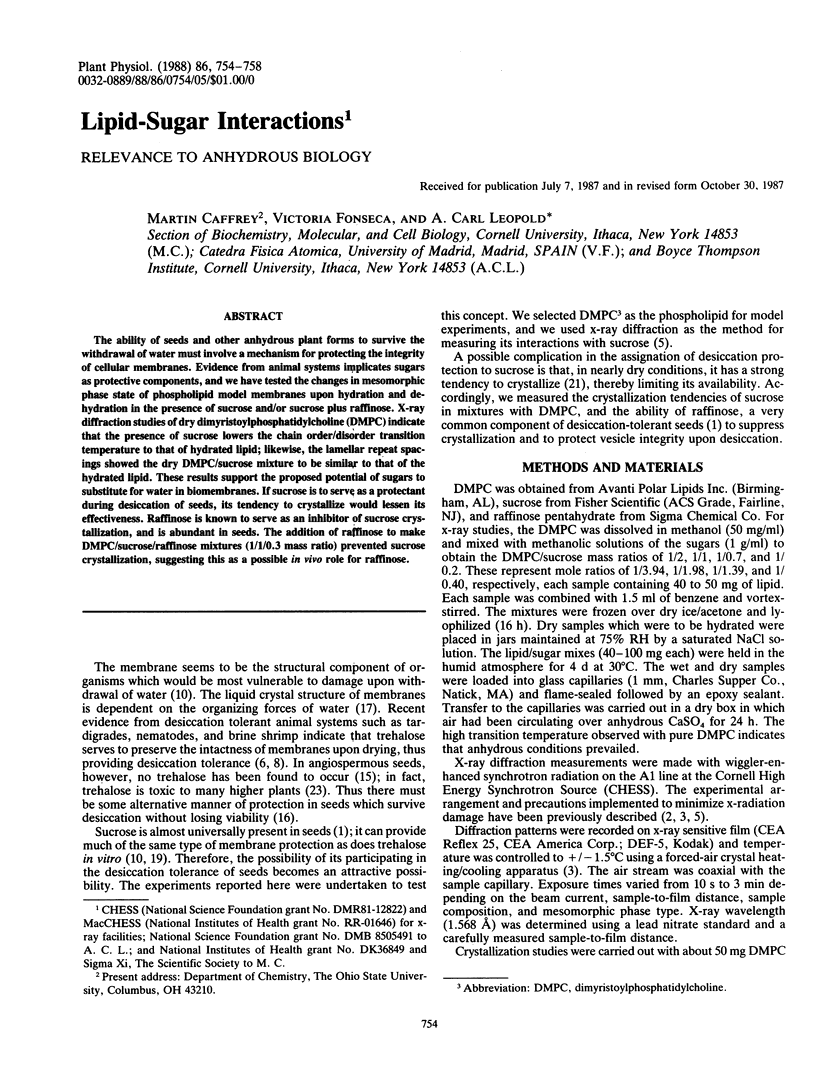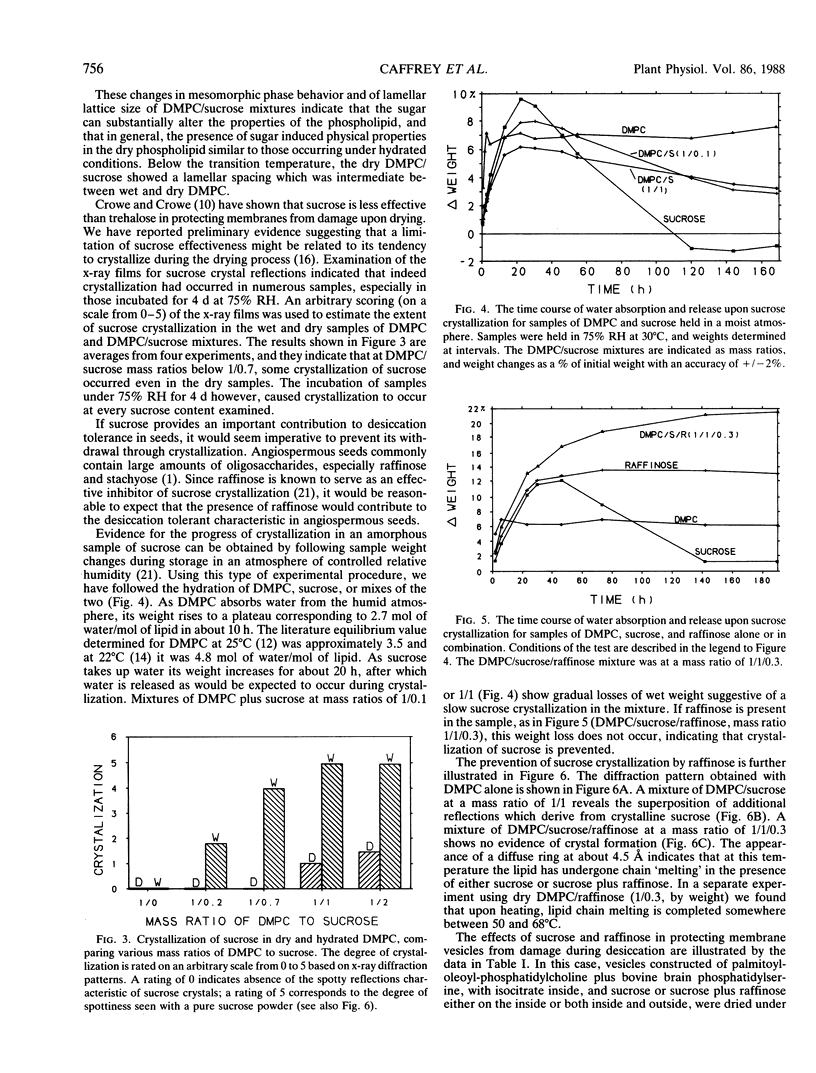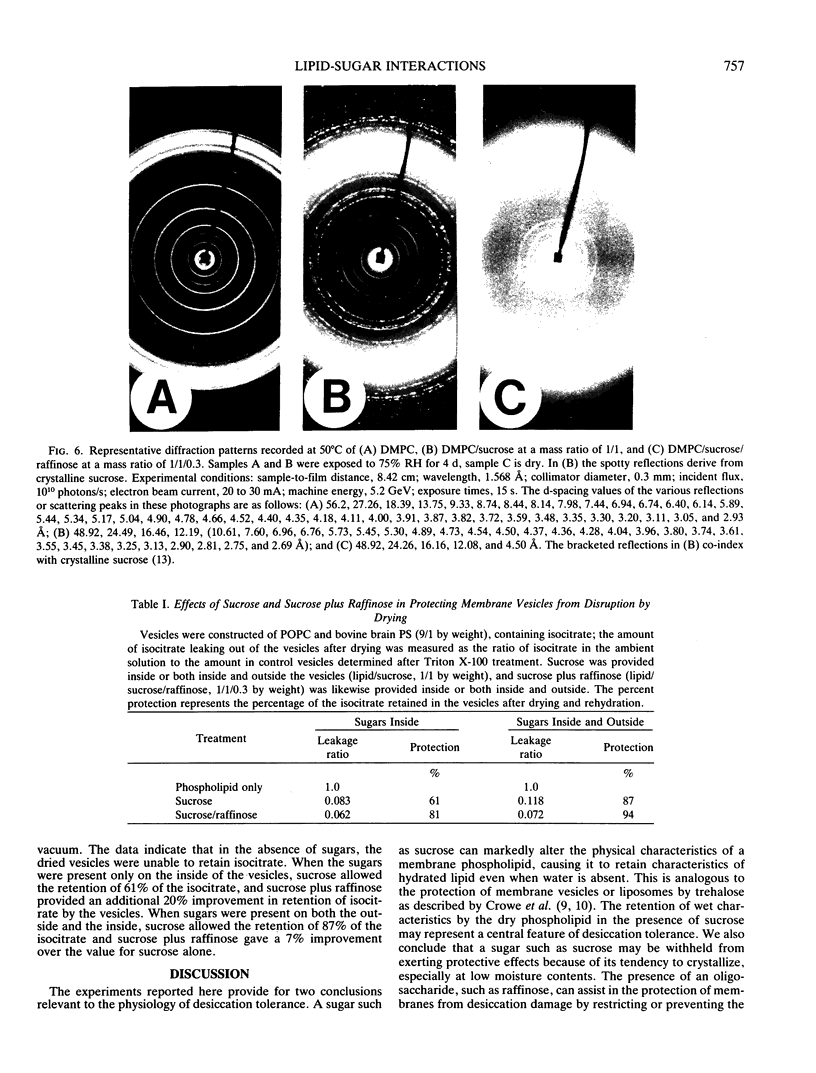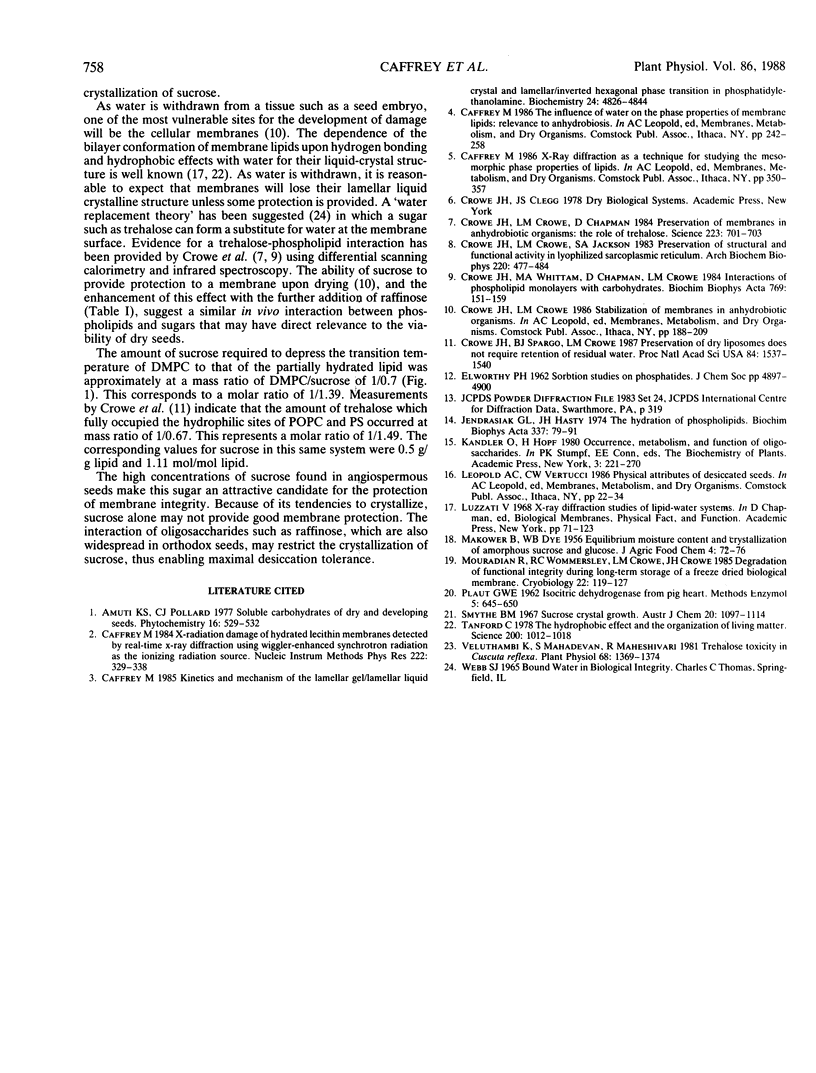Abstract
The ability of seeds and other anhydrous plant forms to survive the withdrawal of water must involve a mechanism for protecting the integrity of cellular membranes. Evidence from animal systems implicates sugars as protective components, and we have tested the changes in mesomorphic phase state of phospholipid model membranes upon hydration and dehydration in the presence of sucrose and/or sucrose plus raffinose. X-ray diffraction studies of dry dimyristoylphosphatidylcholine (DMPC) indicate that the presence of sucrose lowers the chain order/disorder transition temperature to that of hydrated lipid; likewise, the lamellar repeat spacings showed the dry DMPC/sucrose mixture to be similar to that of the hydrated lipid. These results support the proposed potential of sugars to substitute for water in biomembranes. If sucrose is to serve as a protectant during desiccation of seeds, its tendency to crystallize would lessen its effectiveness. Raffinose is known to serve as an inhibitor of sucrose crystallization, and is abundant in seeds. The addition of raffinose to make DMPC/sucrose/raffinose mixtures (1/1/0.3 mass ratio) prevented sucrose crystallization, suggesting this as a possible in vivo role for raffinose.
Full text
PDF




Images in this article
Selected References
These references are in PubMed. This may not be the complete list of references from this article.
- Caffrey M. Kinetics and mechanism of the lamellar gel/lamellar liquid-crystal and lamellar/inverted hexagonal phase transition in phosphatidylethanolamine: a real-time X-ray diffraction study using synchrotron radiation. Biochemistry. 1985 Aug 27;24(18):4826–4844. doi: 10.1021/bi00339a017. [DOI] [PubMed] [Google Scholar]
- Crowe J. H., Crowe L. M., Chapman D. Preservation of membranes in anhydrobiotic organisms: the role of trehalose. Science. 1984 Feb 17;223(4637):701–703. doi: 10.1126/science.223.4637.701. [DOI] [PubMed] [Google Scholar]
- Crowe J. H., Crowe L. M., Jackson S. A. Preservation of structural and functional activity in lyophilized sarcoplasmic reticulum. Arch Biochem Biophys. 1983 Feb 1;220(2):477–484. doi: 10.1016/0003-9861(83)90438-1. [DOI] [PubMed] [Google Scholar]
- Crowe J. H., Spargo B. J., Crowe L. M. Preservation of dry liposomes does not require retention of residual water. Proc Natl Acad Sci U S A. 1987 Mar;84(6):1537–1540. doi: 10.1073/pnas.84.6.1537. [DOI] [PMC free article] [PubMed] [Google Scholar]
- Crowe J. H., Whittam M. A., Chapman D., Crowe L. M. Interactions of phospholipid monolayers with carbohydrates. Biochim Biophys Acta. 1984 Jan 11;769(1):151–159. doi: 10.1016/0005-2736(84)90018-x. [DOI] [PubMed] [Google Scholar]
- Jendrasiak G. L., Hasty J. H. The hydration of phospholipids. Biochim Biophys Acta. 1974 Jan 23;337(1):79–91. doi: 10.1016/0005-2760(74)90042-3. [DOI] [PubMed] [Google Scholar]
- Mouradian R., Womersley C., Crowe L. M., Crowe J. H. Degradation of functional integrity during long-term storage of a freeze-dried biological membrane. Cryobiology. 1985 Apr;22(2):119–127. doi: 10.1016/0011-2240(85)90166-x. [DOI] [PubMed] [Google Scholar]
- Tanford C. The hydrophobic effect and the organization of living matter. Science. 1978 Jun 2;200(4345):1012–1018. doi: 10.1126/science.653353. [DOI] [PubMed] [Google Scholar]
- Veluthambi K., Mahadevan S., Maheshwari R. Trehalose Toxicity in Cuscuta reflexa: CORRELATION WITH LOW TREHALASE ACTIVITY. Plant Physiol. 1981 Dec;68(6):1369–1374. doi: 10.1104/pp.68.6.1369. [DOI] [PMC free article] [PubMed] [Google Scholar]



